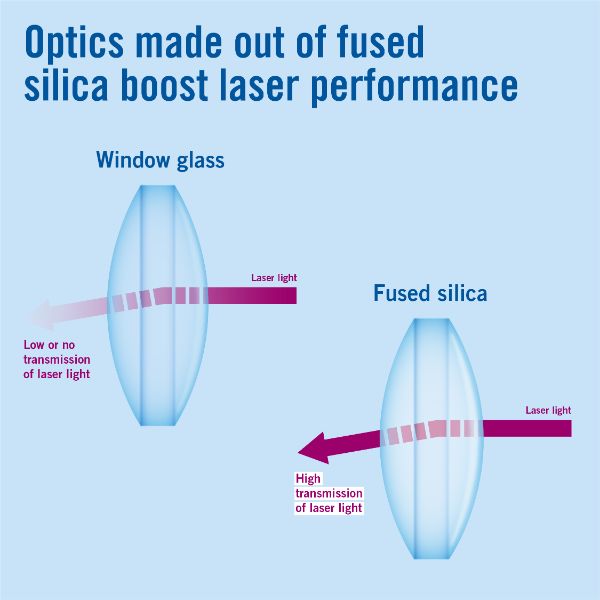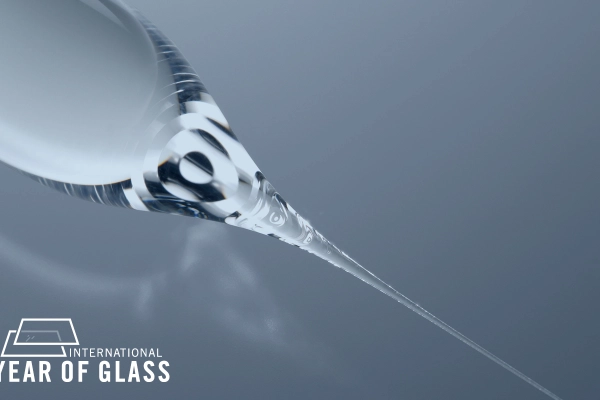Energy Gap: Our world needs more and more energy
The World Energy Council (WEC) predicts that the electricity demand will increase by almost 150 percent by 2060 compared to 2015. At most, 40 to 60 percent of this will be covered by renewable energies. The remaining 40 to 60 percent would still require fossil fuels - an energy gap that must be closed: fusion energy could be the solution.
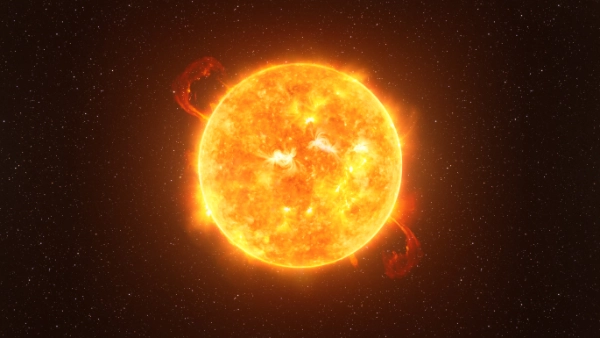
The dream of bringing the almost infinite energy of the stars to earth is currently taking shape again. Laser fusion seems particularly promising. Heraeus Conamic supplies the fused silica for the high-energy lasers.
The first scientific considerations on nuclear fusion were made around 100 years ago, and experimental facilities have been operating since the 1980s. The fact that progress in research has been very slow so far is due to the complexity of the matter. Nuclear fusion is about nothing less than bringing the process of energy generation similar to our sun to the earth. As a result, mankind would have at its disposal a virtually inexhaustible source of energy that would have little impact on the environment and produce no greenhouse gases or radioactive waste.
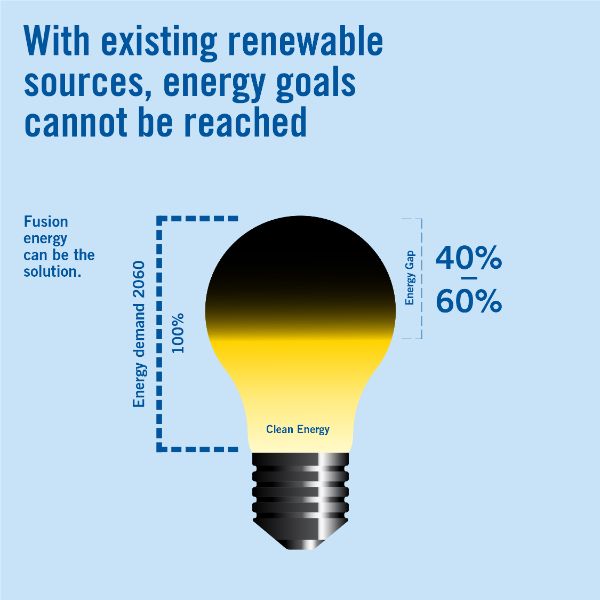
How does nuclear fusion work?
Fusion reactors generate electricity by using heat from nuclear fusion reactions. In a fusion process, two lighter atomic nuclei are fused to form a heavier nucleus, releasing energy. Nuclear fusion produces helium, a noble gas that is harmless to humans and the environment, and high-energy neutrons.
The starting materials for nuclear fusion are the hydrogen isotopes Deuterium and Tritium. They are obtained from simple water, e.g. seawater or wastewater. The high-energy neutrons from the fusion process produce water vapor, which drives a turbine, which in turn drives a generator that produces electricity.
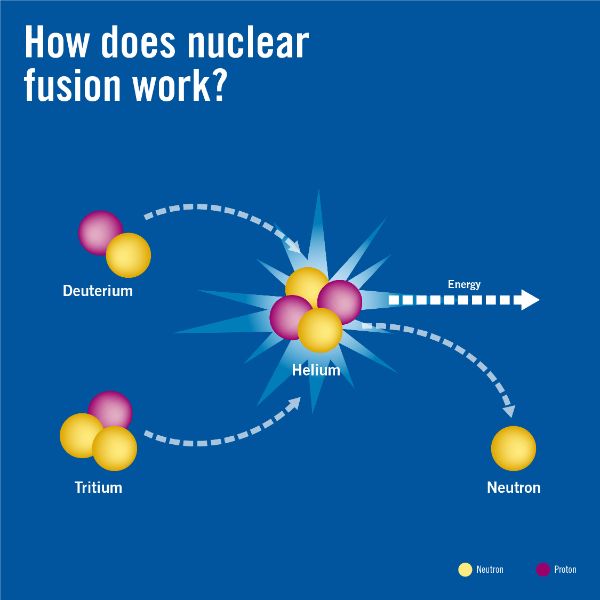
How does laser fusion work?
Triggering the fusion reaction on Earth in a power plant poses enormous challenges for scientists and experts. This is because the strong electrical repulsive forces of the atomic nuclei must be overcome for a successful fusion process. Currently, researchers are exploring two approaches to generate fusion energy: nuclear fusion using powerful lasers or magnetic fields.
The laser fusion has recently achieved a breakthrough. In August 2021, California'sNational Ignition Facility (NIF), a facility of Lawrence Livermore National Laboratory (LLNL), succeeded in using laser fusion to trigger a reaction that released 1.3 megajoules of energy.
The NIF is home to the world's most powerful laser. The facility is almost three soccer fields in size - and yet the laser pulse must ultimately hit the inside of a tiny gold-plated cavity in the reactor. This contains a two-millimeter plastic capsule with Deuterium and Tritium. The laser's UV radiation, with its wavelength of 352 nanometers precisely aligned with gold, generates gamma rays that compress the capsule and thus trigger the fusion reaction.
Our contribution: high purity fused silica for high-energy lasers
For laser fusion, high-precision optics in the 192 laser beams are crucial. The material has high purity and therefore offers excellent optical qualities. In addition, fused silica has the required high transmittance and low absorption in the ultraviolet light spectrum.
"With our fused silica raw material for such laser systems, we are making a substantial contribution to a new, sustainable way of generating clean energy and closing the supply gap that remains with renewable energies", explains Dr. Frank Nürnberg, Global Head of Sales Optics at Heraeus Conamic.
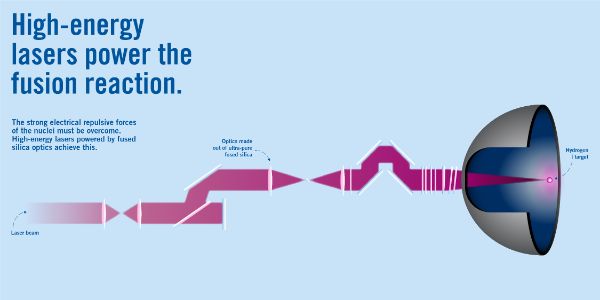
Heraeus supplies research facilities in Europe, the USA, and China with fused silica for laser optics - including NIF. The promising results are causing more and more start-ups to form to commercialize fusion energy. In Germany, Heraeus is in contact with the Darmstadt-based climate tech start-up Focused Energy, among others, to help in the realization of the first prototype in the next few years and have the first commercial laser-based fusion power plant up and running by 2040 at the latest. Until then, a lot of fine-tuning still needs to be done in the fusion reactors. According to Frank Nürnberg, the efficiency is a particular focus: "The efficiency of energy generation describes the ratio of the energy required for the system in the form of electricity and the energy generated by nuclear fusion and converted into electricity. If scientists can maximize this efficiency, then laser fusion would have very great potential to close the energy gap or even replace other energy sources." The next 20 years in nuclear fusion research promise to be interesting.
